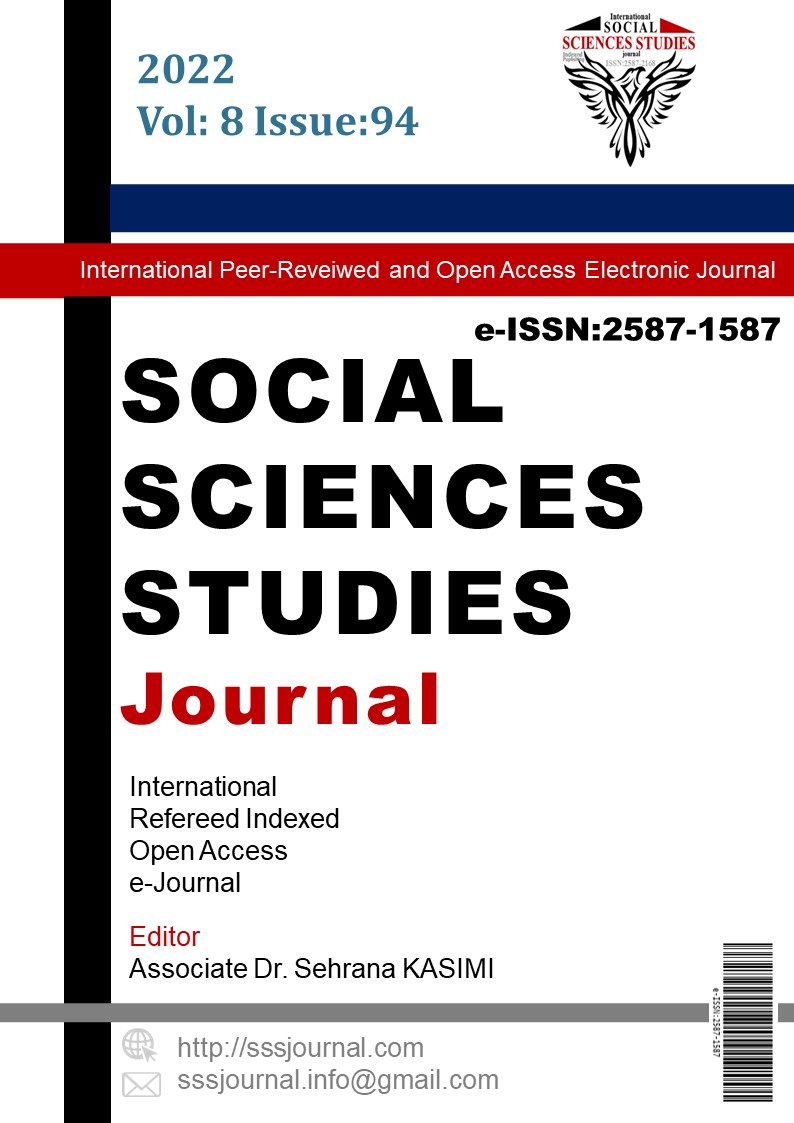Author :
Abstract
Türk müziğinde çalgı eğitimi alanındaki çalışmaların sistematik bir yapıya sahip olmaması eğitim-öğretim aşamasında bazı sorunlara sebep olmaktadır. Klasik kemençe eğitimlerinde teknik yetersizliklerden kaynaklı icra problemleri ortaya çıkmaktadır ve çalgı hakimiyetinin kazanılması uzun zaman alabilmektedir. Bu sebeple bu eğitimlerin belirli bir sistematiğe oturtulması ve klasik kemençe eğitimine yönelik çalışmaların artması bir zorunluluk haline gelmiştir. Tüm çalgılarda temel pozisyon olan 1. pozisyon çalışmaları, daha ileri icraya zemin hazırlaması bakımından ve icra tekniklerinde yaşanan problemlerin giderilmesi adına büyük önem taşımaktadır. Bu parmak çalışmalarının belirli bir sistematiğe oturtulması ve etüt çalışmalarının artması bir zorunluluk haline gelmiştir. Bu çalışma, yayınlanmış olan klasik kemençe metotlarındaki 1. pozisyon parmak etütlerinin incelenerek, eksik ve farklı yönlerinin tespit edilmesiyle ileride yapılacak olan çalışmalara ışık tutacak tespitleri ortaya koymak amacıyla yapılmıştır. Araştırma sonucunda; klasik kemençe metotlarındaki 1. pozisyon parmak çalışmalarının farklı yöntemlerle aktarıldığı sonucuna varılmıştır.
Keywords
Abstract
The fact that the studies in the field of instrument training in Turkish music do not have a systematic structure causes some problems in the education phase. In classical kemencha training, performance problems arise due to technical inadequacies and it may take a long time to gain instrument dominance. For this reason, it has become a necessity to put these trainings in a certain system and to increase the studies on classical kemencha training. The 1. position studies, which are the basic positions in all instruments, are of great importance in terms of laying the groundwork for further performance and eliminating the problems experienced in performance techniques. It has become a necessity to put these finger studies into a certain systematic and to increase the study studies. This study was carried out in order to reveal the findings that will shed light on the future studies by examining the 1st position finger studies in the published classical kemencha methods and determining their missing and different aspects. As a result of the research; It has been concluded that the 1. position finger studies in classical kemencha methods are transferred by different methods.
Keywords
- Bilen, S. (1995). İşbirlikli Öğrenmenin Müzik Eğitimi ve Güdüsel Süreçler Üzerindeki Etkileri. İzmir Dokuz Eylül
- Bilen, S. (1995). İşbirlikli Öğrenmenin Müzik Eğitimi ve Güdüsel Süreçler Üzerindeki Etkileri. İzmir Dokuz Eylül Üniversitesi.
- Cüceoğlu, G., & Berki, T. (2007). Flüt Eğitimine Yönelik Bir “ etüd analiz modeli ” An “ Etude Analysis Model ” Related to Flute Education. Gazi Üniversitesi Gazi Eğitim Fakültesi Dergisi, 27(1), 227–235.
- Delikara, A. (1992). Keman Eğı̇tı̇mı̇neYönelı̇k Bı̇r " Etüt Analı̇z Modelı̇ " Related To Violin Education. Sanat Eğitimi Dergisi, 1(2), 1–17. https://doi.org/10.7816/sed
- Eruzun Özel, A. (2010). Kemençe Eğitiminde Metodoloji Sorunu.Karasar, N. (2012). Bilimsel Araştırma Yöntemi (Nobel Akad).
- Özalp, M. N. (1984). Türk Sanat Mûsıkîsi Sazlarından Kemençe. TRT Basılı Yayınlar Müdürlüğü.Parasız, G. (2009). Eğitim Müziği Eksenli Keman Öğretiminde Kullanılmakta Olan Çağdaş Türk Müziği Eserlerinin Tespitine Yönelik Bir Çalışma. Sanat Dergisi, 0(15), 19–24.
- Pınar, Ç. (2017). Türk Müziği Konservatuarlarında Çalgı Eğitim Ortaöğretim Bölümü 4 Telli Kemençe Eğitimine Yönelik Makamsal Etüt Önerileri. İstanbul Haliç Üniversitesi.
- Sarı, A. (2012). Türk Müziği Çalgıları. Nota Yayıncılık.
- Uçan, A. (2018). Müzik Eğitimi. Arkadaş Yayınevi.
- Yalçın, T. (2017). Türk Mûsıkîsinin Mes’eleleri. İz Yayıncılık.
- Yalçınkaya, B. (2012). Çalgı Eğitiminde Etüt Yazma Modeli. Fine Arts, 7(1), 21–24.





